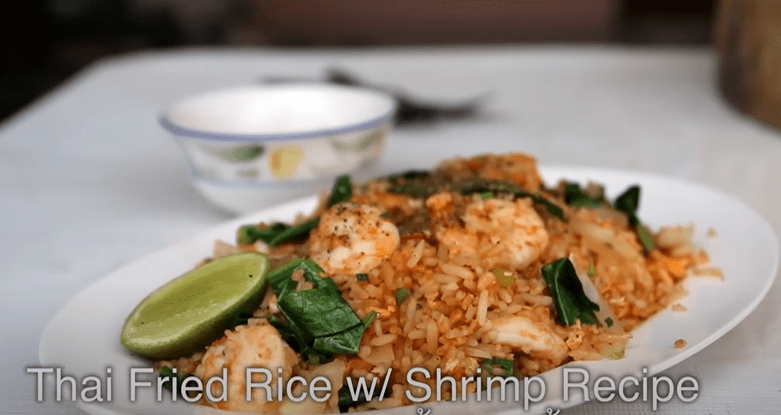
Thai Fried Rice with Shrimp (Khao Pad Goong)

Thai Fried Rice with Shrimp (Khao Pad Goong)
Table of Contents
ToggleThai Fried Rice with Shrimp (Khao Pad Goong), Welcome to Bangkok on a plate! Imagine the aroma of sizzling garlic in a hot wok, the sweet brininess of shrimp caramelizing, and the warmth of jasmine rice absorbing every drop of umami goodness. This is Khao Pad Goong — Thai-style fried rice with shrimp, an everyday hero of street food that balances flavor, comfort, and simplicity in one hearty dish.
Whether you’re cooking for a quick lunch or impressing dinner guests, this recipe brings authentic Thai street food right into your kitchen. And guess what? It’s endlessly customizable and packs a punch of flavor with basic pantry staples.
Fresh, succulent shrimp are the heart of this recipe. They release aromatic oils that turn the rice a beautiful pink-orange and add deep umami flavor to the dish. In Thailand, keeping the tails on is common for extra flavor and presentation.
This leafy green adds crunch and freshness. Substitute with kale or spinach if needed.
A foundational flavor in Thai cuisine—fragrant, earthy, and necessary.
A sweet balance to the shrimp’s umami richness.
Dry rice works best for frying. Moist rice turns mushy—let it sit overnight in the fridge if possible.
| Quantity | Shrimp | Day-Old Rice | Garlic Cloves | Egg | Onion | Green Onion | Chinese Broccoli | Soy Sauce | Oyster Sauce | Sugar | Lime | Oil |
|---|---|---|---|---|---|---|---|---|---|---|---|---|
| 1x | 10 | 2 cups | 2 | 1 | ½ small white onion | 2 stalks | 1 big leaf | ½ tbsp | ½ tbsp | pinch | ½ | 1 tbsp |
| 2x | 20 | 4 cups | 4 | 2 | 1 small white onion | 4 stalks | 2 big leaves | 1 tbsp | 1 tbsp | ½ tsp | 1 | 2 tbsp |
| 4x | 40 | 8 cups | 8 | 4 | 2 small onions | 8 stalks | 4 big leaves | 2 tbsp | 2 tbsp | 1 tsp | 2 | 4 tbsp |
Mix 3 tbsp fish sauce, 5 chopped Thai chilies, and juice of half a lime. Set aside — this will be your spicy-salty-sour condiment.

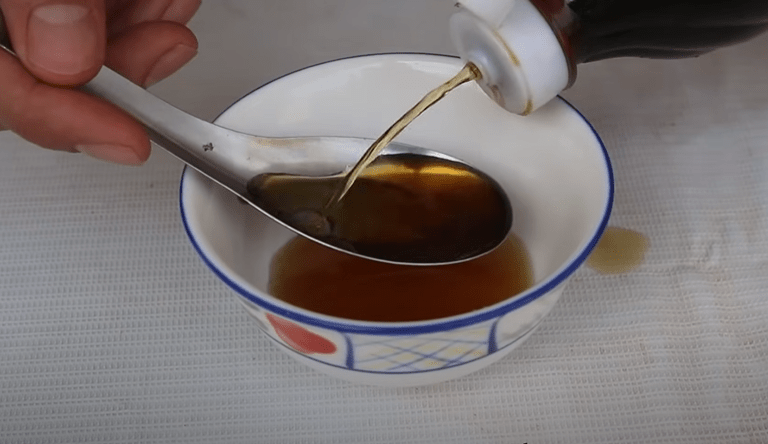


Peel shrimp (leave tails on if you want the Thai-style look).
Coarsely mince garlic.
Slice onions and green onions.
Chop Chinese broccoli into 1 cm strips.

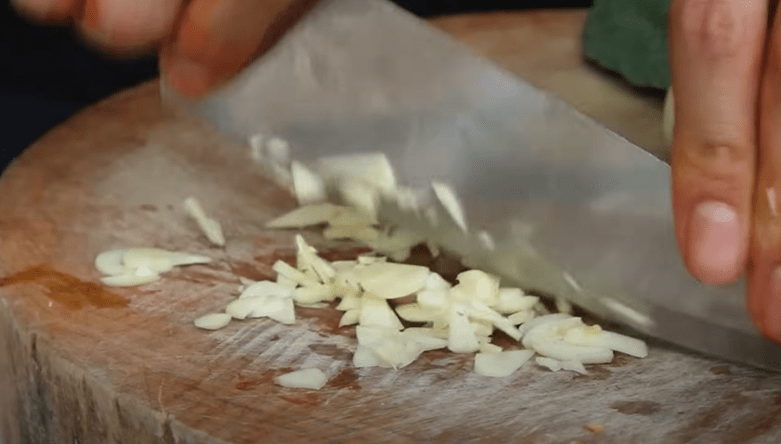
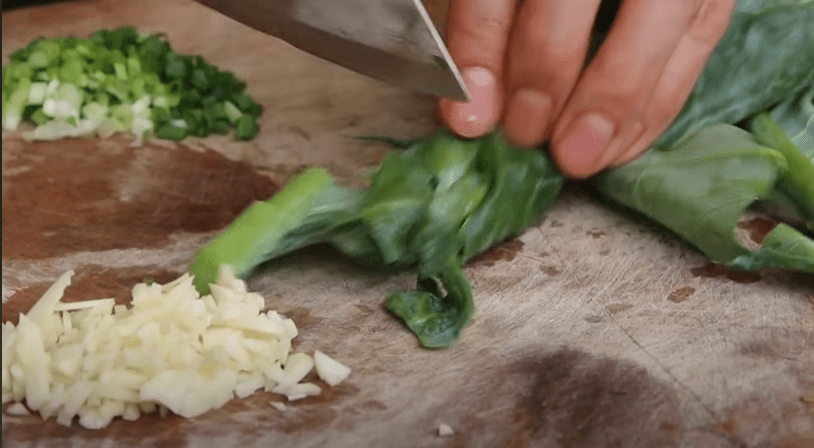
Heat 1 tbsp oil in a wok or large skillet until shimmering.

Add garlic, stir-fry for 15 seconds. Then toss in shrimp and stir continuously for 30 seconds.


Add half of the rice to soak up all the flavorful shrimp juices.

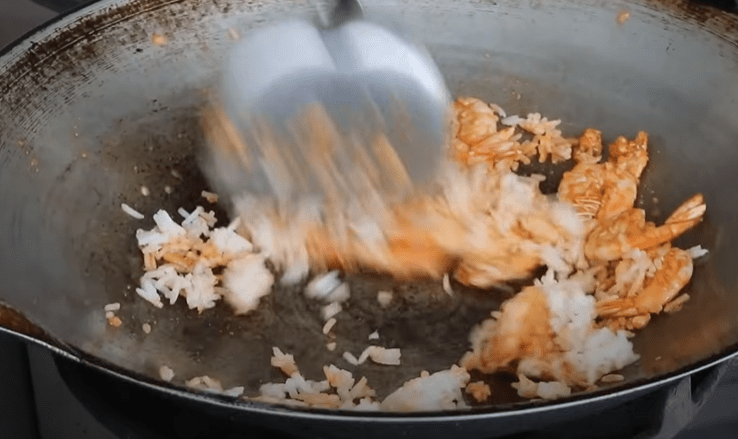
Push rice to the side, crack in the egg. Scramble until mostly cooked, then mix everything together.


Add remaining rice, soy sauce, oyster sauce, and a pinch of sugar. Stir-fry until evenly coated.
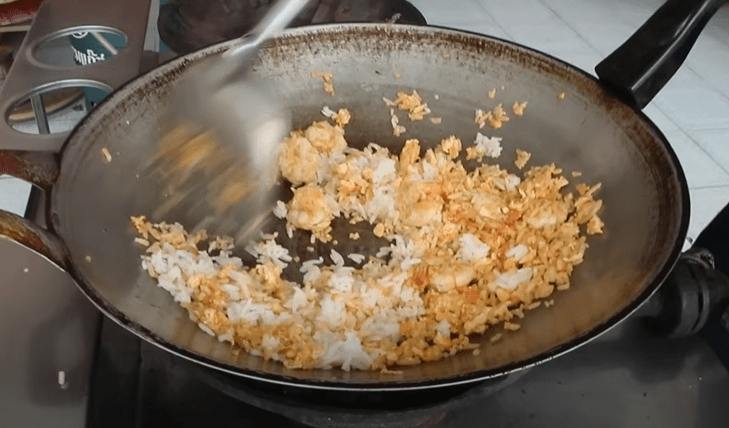
Toss in Chinese broccoli and onions. Stir-fry for another 30 seconds.


Add green onions. Stir for 15 seconds and remove from heat.

Serve with lime wedge, sprinkle black pepper, and drizzle with your homemade prik nam pla.

The secret lies in three things:
Day-old jasmine rice — it’s slightly dry and absorbs flavors better.
Shrimp oil — when you sauté the shrimp, don’t discard the head juices; they infuse the dish with natural umami and color.
Wok hei — high heat + constant movement gives fried rice that magical smoky essence. Don’t crowd your pan!
Always use day-old rice for the best texture.
Don’t overcook the shrimp — 30-45 seconds is enough.
Customize proteins — sub shrimp with chicken, pork, tofu, or even beef.
Use oyster sauce and fish sauce together for layered flavor.
Stir constantly on high heat for wok hei.
Add egg after rice for better distribution.
Always finish with green onions and lime — Thai essentials.
You can also add diced tomatoes or pineapple for variation.
A splash of white pepper gives that real Thai kick.
Don’t skip prik nam pla — it’s the soul of Thai fried rice.
Allow the rice to cool completely before storing. Then, place it in an airtight container and refrigerate for up to 3 days. When reheating, sprinkle a few drops of water over the rice and microwave it covered to retain moisture, or reheat in a wok over medium heat with a splash of oil.
Yes — and it’s actually a great meal prep idea!
To freeze:
Let the rice cool down fully.
Divide into meal-size portions and store in freezer-safe bags.
Flatten each bag for faster thawing and space-saving.
Label with the date.
When you’re ready to enjoy, let it thaw in the fridge overnight or microwave from frozen (covered, with a sprinkle of water). Add a splash of fresh lime juice and some prik nam pla after reheating to revive the flavors.
Rahul K says:
“I’ve tried dozens of fried rice recipes, but this one from Mark Wiens turned out absolutely restaurant-grade. The shrimp flavor was intense, and the prik nam pla — oh man, that stuff’s addictive. I made it twice in the same week!”
Calories: ~450 kcal
Protein: 25g
Carbs: 45g
Fat: 18g
Fiber: 2g
Sugar: 3g
Sodium: 900mg
📺 Watch the full recipe with Mark Wiens in Bangkok:
👉 Watch on YouTube
Yes, but let it cool and dry a bit first. Fresh hot rice will get mushy when fried.
Use hoisin sauce or a mix of soy sauce and a bit of brown sugar.
Absolutely! Just thaw and pat dry before cooking to avoid excess moisture.
YES! It’s like salt & pepper in Thai cuisine. It adds a depth of salt, heat, and sourness that lifts the dish.
Of course! Swap shrimp with tofu and skip the fish/oyster sauce for soy sauce or tamari.